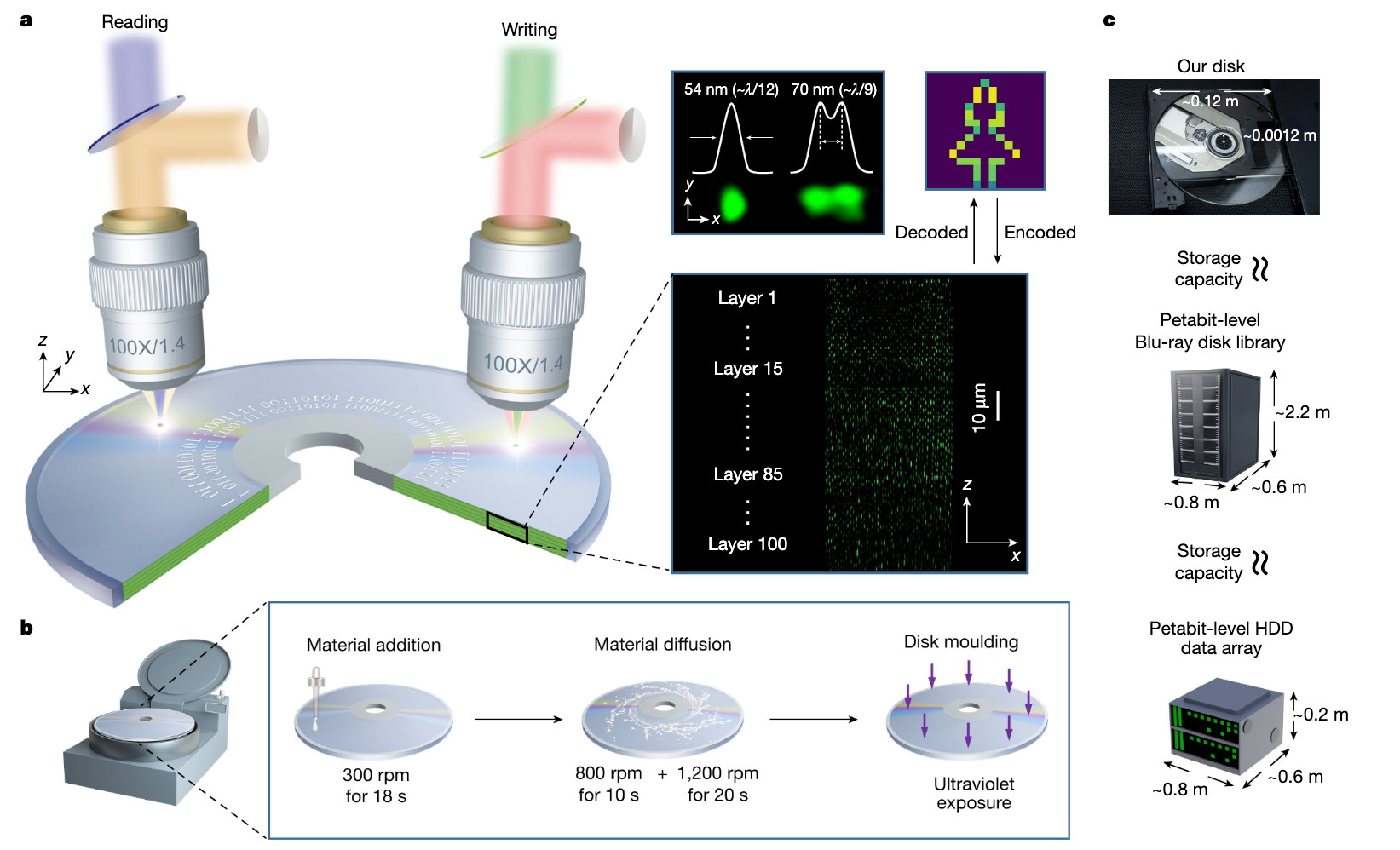
The Future Resurgence of Optical Media Driven by Revolutionary Technology

The Future Resurgence of Optical Media Driven by Revolutionary Technology
Key Takeaways
- Optical storage, once the future, is in decline due to slow speeds and solid-state storage rise.
- A breakthrough by a research team developed a 200TB DVD-sized disc for data storage.
- This 1.6 petabit disc signifies a new era for optical storage, promising vast data storage potential.
In the 90s, every sci-fi movie that featured data storage invariably had some far-future version of a CD in it. It may have been in a caddy, or have a weird holographic sheen, but everyone thought optical discs were the future. Today, that doesn’t seem likely, but continuing research into optical storage might prove those movies right after all.
What Is “Optical” Storage?
It pains me to write this, but there are probably some of you reading this who only have vague contact with optical media. While you can still readily get Blu-ray, DVD, and CD media, many people have grown up in a digital download and streaming age, with little need to ever touch a disc. Which means, there’s a good chance you don’t actually know how it works. Everyone else can just skip to the next section, but here goes:
Optical media use light to store and read data. An optical disc has microscopic pits and lands that either reflect or diffuse light. When you shine a laser beam at these discs and measure the light that comes back, you get a series of ones and zeros. All you need to store digital data. While optical discs are “pressed” in a factory, home-made discs use a laser to create these pits and lands by altering the chemistry in a special dye layer within the disc.
Why Is Optical Storage in Decline?
There are many advantages to optical storage, but it’s largely fallen out of favor thanks to the rise of fast solid-state storage. Optical discs are simply too slow to read data from, so if you buy a game for your console on Blu-ray, it has to be copied to the internal SSD first before you can play. Right now, optical media is most useful for long-term cold storage of data, but at one time it was used as a live storage medium for software in order to save precious hard drive space.
While the largest current Blu-ray disc clocks in at around 100GB of storage space, even that’s becoming a little tight, and with high-speed internet becoming more common and affordable, it’s sometimes faster to download something from the internet than to copy if from a Blu-ray!
Modern PCs and Macs don’t come with optical drives anymore, and it seems that gaming consoles are moving in this direction as well, with disc drives becoming optional, and major stores phasing out physical media . As a physical media collector it almost hurts to write this, but it does look like the writing is on the wall for optical media. However, the technology is far from a dead end, and a breakthrough in optical storage might bring back the optical disc yet!
Say Hello to the Petabit Disc!

Miao Zhao, Jing Wen, Qiao Hu, Xunbin Wei, Yu-Wu Zhong, Hao Ruan & Min Gu
A team of scientists at the University of Shanghai for Science and Technology, headed up by Professor Min Gu, has developed a 1.6 Petabit disc. Keep in mind the difference between bits and bytes , since a petabit is around eight times smaller than a petabyte. This means you’re looking at 1.6 million Gigabits. Either way, this means a DVD-sized disc that stores around 200TB of data!
You can read the published paper in Nature, but the gist of it is that the team managed to create a disc with a 3D structure and hundreds of layers. Consider that the best Blu-ray disc has but four layers, and you’ll understand that this is a monumental improvement.
These discs have been designed for use in data centers and requires expensive and complex femtosecond lasers. Multiple lasers are needed to activate and deactivate the recording layers, so it’s hardly a disc drive that will fit in your laptop bag, but it does show how much potential there still is in optical storage. In data centers, these discs promise safe, long-term storage of data that doesn’t need to be accessed constantly, but should be in an accessible archive. The paper suggests these nanoscale discs can be stacked to create “exabit-level storage” which could be a huge deal given how fragile the internet can be .
What Does This Mean for Us?
You might think this is all very interesting, but what does data-center storage have to do with you and me? Well, apart from the fact the we all use data center storage every day of our lives, I’m hopeful that some aspects of this discovery can be scaled down to the consumer level.
After all, I don’t need a 200TB optical disc, but 2TB? 5TB? Yes please! These researchers have shown that we can blow far past the limits of Blu-ray and use optical storage to store heaps of data using very little physical space. In the end, those little sci-fi optical discs might have been prophetic after all!
Also read:
- [New] 2024 Approved Invaluable Resource for Zero-Cost Video and Photo Providers
- [New] 2024 Approved Revolutionizing Content Creation The Future of Live Video on Facebook
- [Updated] In 2024, Enhancing YouTube Video Screens Without Barriers
- Best Fixes For Realme Narzo 60x 5G Hard Reset | Dr.fone
- Expert Picks for Drone Pilots’ VR Eyewear
- How do I reset my Nokia C300 Phone without technical knowledge? | Dr.fone
- How to Get Your Windows PC to Recognize the TL-WN722N Network Card
- In 2024, 3 Effective Ways to Unlock iCloud Account Without Password From iPhone SE
- Master Hashtag Engagement: 4 Powerful Tools for Tracking Twitter Conversations
- The Easiest Methods to Hard Reset Vivo Y27 5G | Dr.fone
- The Lunar Gospel | Free Book
- The way to get back lost call history from Xiaomi
- Three Solutions to Hard Reset Xiaomi Redmi Note 13 Pro+ 5G? | Dr.fone
- Update your drivers with Device Manager in Windows 7
- What can you do with Face ID on iPhone 15?
- Title: The Future Resurgence of Optical Media Driven by Revolutionary Technology
- Author: Ian
- Created at : 2025-02-16 18:04:16
- Updated at : 2025-02-19 18:18:51
- Link: https://techidaily.com/the-future-resurgence-of-optical-media-driven-by-revolutionary-technology/
- License: This work is licensed under CC BY-NC-SA 4.0.